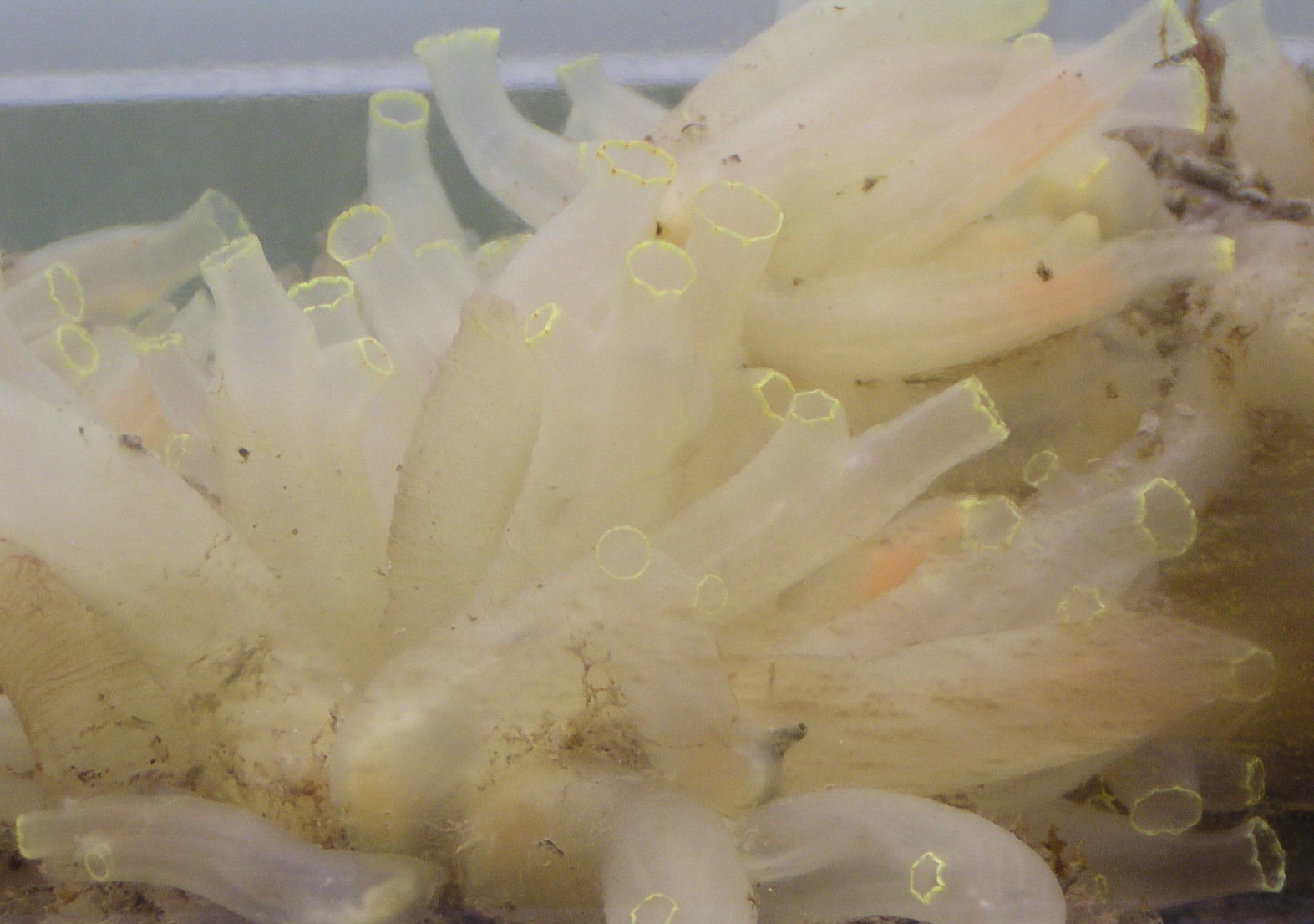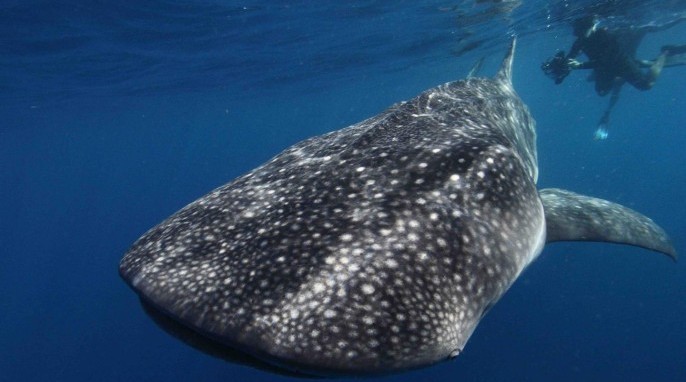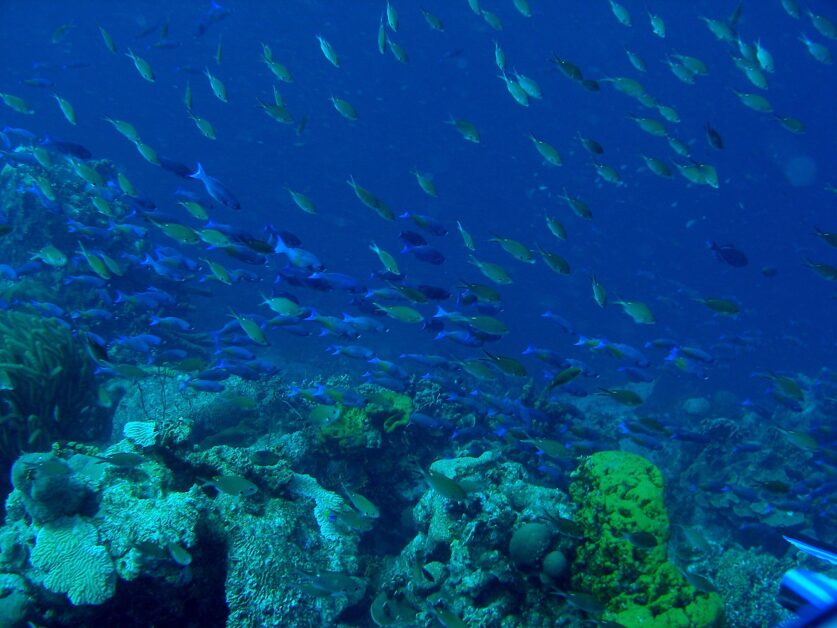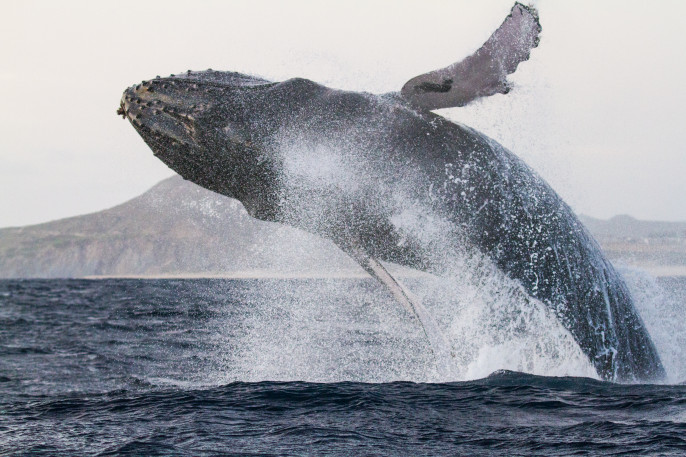Sensory neurons help animals make sense of the world, and these small marine invertebrates can do a lot with only a few neurons.
By Sofia Caetano Avritzer
As any first-time homeowner will tell you, picking a place to settle down is a big decision. There are so many factors to take into account: Is it a good school district? Are there supermarkets nearby? Is it a safe neighborhood? The number of variables to consider can seem almost overwhelming. Now imagine you could only choose where to live once and, after making that decision, you were never allowed to move again (quite literally)—it would be the single biggest decision of your life. This scenario might seem a bit exaggerated, but it is exactly what happens to the tiny marine invertebrate Ciona intestinalis—one of the closest living relatives to vertebrates.
Ciona (commonly known as sea squirts) are tubular marine invertebrates that spend most of their lives attached to the bottom of the ocean, eating food particles they filter out of ocean water. In order to survive, they must pick a good spot on the ocean floor that is safe from predators and is filled with lots of tiny food particles.
Sea squirts only get one shot at deciding where to settle down. Young larvae are tiny—about 1/64 of an inch—and have tails that allow them to swim. Adults, however, undergo a metamorphosis process where they lose their tail and become fixed in place. To make the stakes even higher, Ciona larvae have to make this life-changing decision using only 177 neurons—3 times fewer neurons than you have on a single one of your toes. So, how do sea squirts pick a good place to live?
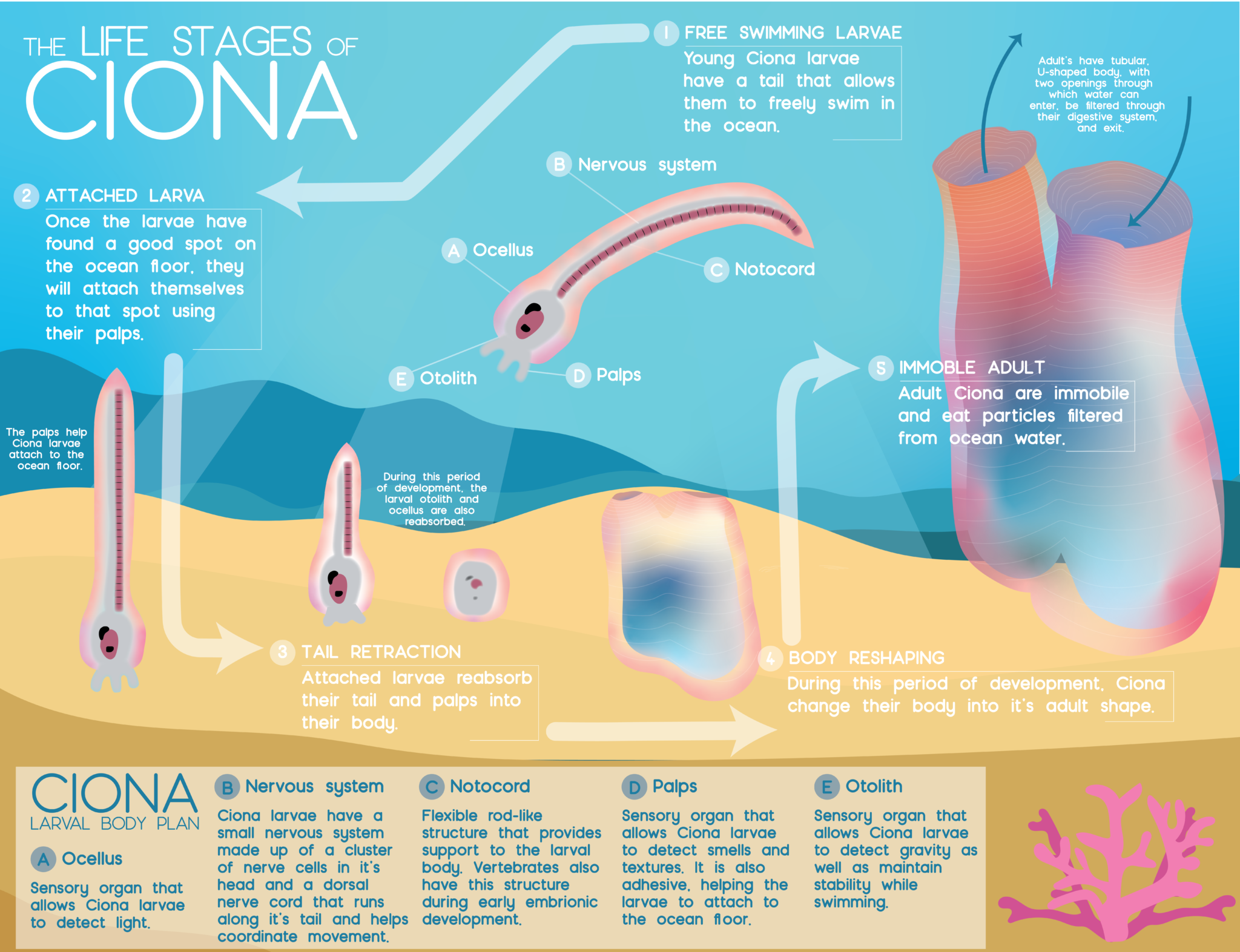
Scientists at the University of Bergen (in Norway) recently made a big step in understanding how Ciona larvae, with so few neurons, decide where to spend the rest of their lives. They found that Ciona have neurons that simultaneously sense both chemical signals and what they are touching. By reusing the same neurons for different sensory categories, Ciona are able to process complex information from the environment with a very small nervous system.
The right place should feel right—and smell right
Scientists had some clues from previous studies about the cues that sea squirts use to select their home. They knew, for example, that Ciona larvae prefer to attach themselves to rough substrates, including man-made structures such as concrete. This is probably because harder surfaces can generate more water flow around them—which is what an animal that eats food particles brought by water currents would want.
RELATED: To Sea Turtles, Ocean Plastic Smells Like Food
What surprised the researchers was that these animals also responded to a large variety of chemicals tested in the study. Several kinds of sugars, for example, made Ciona larvae more likely to settle down on substrate. This preference may make sense because sugars can often be a sign of proximity to food.
Other chemicals had the complete opposite effect. A class of chemical compounds called Terpenes—hydrocarbons produced by marine animals for chemical defense—made the larvae much more reluctant to attach themselves and start the transition into adulthood.
The fact that sea squirt larvae responded to a large number of chemicals as well as the texture of substrates raised a question for the researchers: If these animals have only about 30 sensory neurons in their palps (the organ Ciona larvae use to smell and feel their surroundings), how can they detect such a wide range of signals?
How can we measure the activity of sensory neurons?
To understand what was happening in the nervous system of the Ciona larvae, researchers took a look at the activity of their neurons.
When a neuron is active, it has an electrical current running through it—like the one you can find in the wires in your house. When scientists say they want to look at neuronal activity, it is this electrical current they are referring to. But how can we look at electricity?
It turns out that when neurons become electrically active, they also increase the amount of calcium inside them. In the early 2000s, neuroscientists figured out how to use this calcium increase to make neurons fluoresce when they are active. This method is called calcium imaging and it makes neurons blink on and off, like lights on a Christmas tree. How brightly a neuron fluoresces is a measure of how active it is.
Using this calcium imaging technique, researchers were able to ask how Ciona neurons responded to smelling or touching something.
RELATED: Nests, Neurons, and the Evolution of Behavior
Streamlining a small nervous system
When researchers looked at the activity of Ciona sensory neurons (cells in the nervous system that animals use to sense the world), they found something unexpected: these neurons responded not only to several different smells, but also to when the animal was poked with a small rod. What this means is that, unlike most human sensory neurons, Ciona sensory neurons are not specialized to a single sense and can instead detect multiple senses.
In humans, most sensory neurons are specialized to detect a single sense. We have neurons in our eyes that sense light, neurons in our nose that detect chemicals, neurons in our skin that sense temperature and texture, and so on. There is an interesting exception to this rule. Human pain receptors are thought to respond to both mechanical injury (like cutting your finger on a piece of paper), as well as harmful temperatures (such as burning your hand on the stove). Sensory neurons that detect multiple senses have also been found in other organisms, such as fruit fly larvae, roundworms, and jellyfish. In small animals with tiny brains, reusing the same cells to detect different senses may be an important space-saving mechanism.
Small invertebrates are the most abundant animals in the ocean and there are little to no studies done on most of these organisms. Many of these animals may have sensory neurons that respond to multiple senses, like those found in Ciona. As we learn more about marine organisms, this kind of sensory system might prove to be the rule, rather than the exception.
RELATED: Eight Incredible Deep Sea Creatures
This study was published in the peer-reviewed journal Current Biology.
References
Bessou, P., & Perl, E. R. (1969). Response of cutaneous sensory units with unmyelinated fibers to noxious stimuli. Journal of Neurophysiology, 32(6), 1025–1043. https://doi.org/10.1152/jn.1969.32.6.1025
Chase, A. L., Dijkstra, J. A., & Harris, L. G. (2016). The influence of substrate material on ascidian larval settlement. Marine Pollution Bulletin, 106(1–2), 35–42. https://doi.org/10.1016/j.marpolbul.2016.03.049
Chung, J., Newman-Smith, E., Kourakis, M. J., Miao, Y., Borba, C., Medina, J., Laurent, T., Gallean, B., Faure, E., & Smith, W. C. (2023). A single oscillating proto-hypothalamic neuron gates taxis behavior in the primitive chordate Ciona. Current Biology, 33(16), 3360–3370.e4. DOI: 10.1016/j.cub.2023.06.080
Corniani, G., & Saal, H. P. (2020). Tactile innervation densities across the whole body. Journal of Neurophysiology, 124(4), 1229–1240. https://doi.org/10.1152/jn.00313.2020
Gross, H., & König, G. M. (2006). Terpenoids from marine organisms: Unique structures and their pharmacological potential. Phytochemistry Reviews, 5(1), 115–141. https://doi.org/10.1007/s11101-005-5464-3
Hotta, K., Dauga, D., & Manni, L. (2020). The ontology of the anatomy and development of the solitary ascidian Ciona: The swimming larva and its metamorphosis. Scientific Reports, 10(1). https://doi.org/10.1038/s41598-020-73544-9
Hoyer, J., Kolar, K., Athira, A., van den Burgh, M., Dondorp, D., Liang, Z., & Chatzigeorgiou, M. (2024). Polymodal sensory perception drives settlement and metamorphosis of Ciona larvae. Current Biology, 34(6), 1168–1182.e7. https://doi.org/10.1016/j.cub.2024.01.041
Jonz, M. G. (2018). Insights into the evolution of polymodal chemoreceptors. Acta Histochemica, 120(7), 623–629. https://doi.org/10.1016/j.acthis.2018.08.008
Pennati, R., Ficetola, G. F., Brunetti, R., Caicci, F., Gasparini, F., Griggio, F., Sato, A., Stach, T., Kaul-Strehlow, S., Gissi, C., & Manni, L. (2015). Morphological differences between larvae of the Ciona intestinalis species complex: Hints for a valid taxonomic definition of distinct species. PLOS ONE, 10(5), e0122879. https://doi.org/10.1371/journal.pone.0122879
Featured image “Cionaintestinalis” by perezoso is licensed under CC BY-SA 3.0.
Infographic “The Life Stages of Ciona” courtesy of Sofia Caetano Avritzer.
About the Author
Sofia Caetano Avritzer is a neuroscience PhD student at the Rockefeller University. When she is not in the lab, she loves talking and writing about science, visiting National Parks, and making pottery. She lives in NYC with her partner and two cats. Connect with her through X (formerly Twitter) @sofiavritzer.

